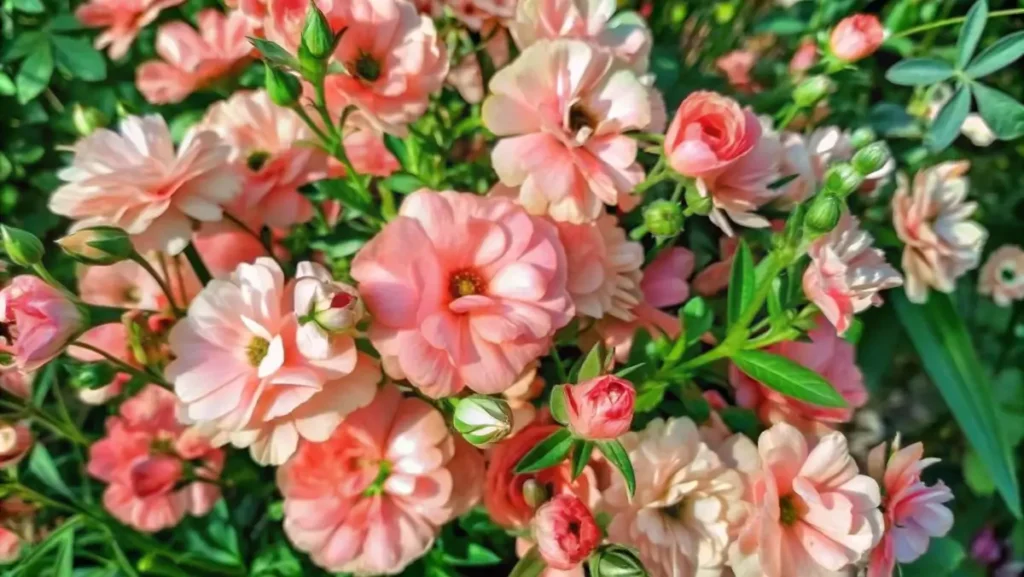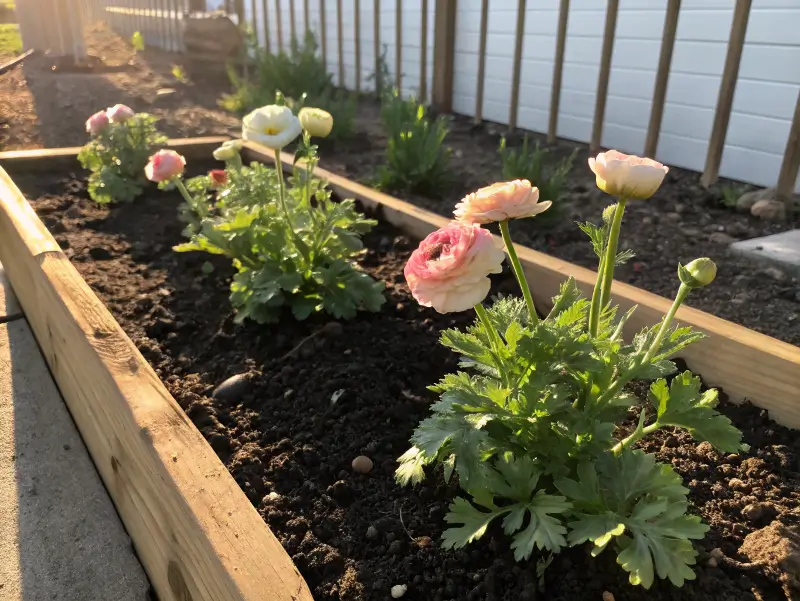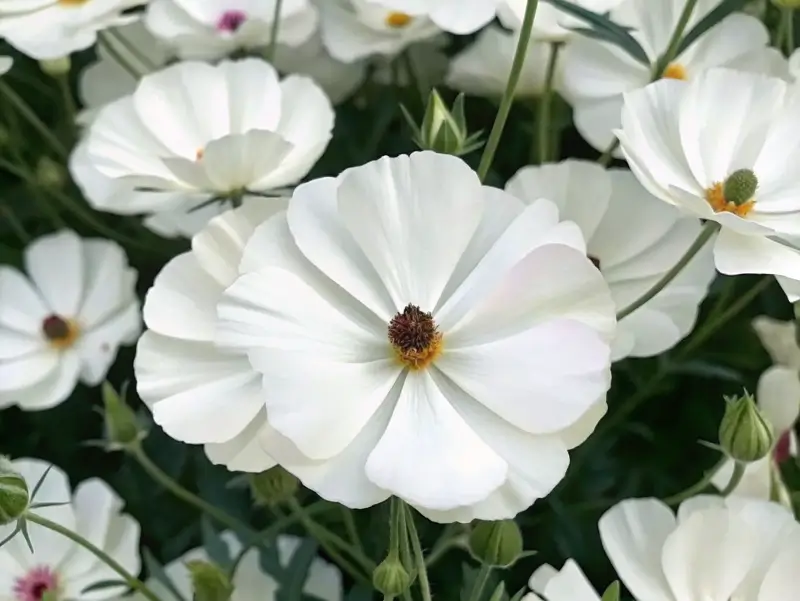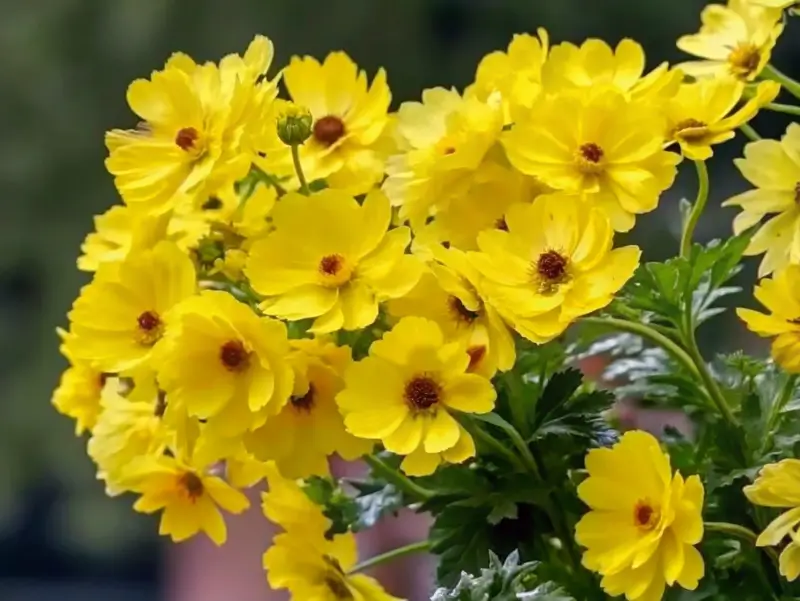
Curious about the bright, fluttery charm of butterfly ranunculus? I’m thrilled to share how these gorgeous blooms can energize any garden. We’ll cover proper soil prep, corm planting, pest management, and plenty more. Expect stories, easy tips, and the inside scoop on spring trends. You’ll also see how butterfly ranunculus measures up against traditional ranunculus, revealing what makes it so special all season long. There’s so much to love.
Table of Contents
Introduction to butterfly ranunculus
Origins and Unique Features of butterfly ranunculus
I remember the first time I spotted butterfly ranunculus at a local nursery. I was drawn in by its delicate petals and soft, pastel shades. Some folks don’t realize that butterfly ranunculus is part of the buttercup family, known scientifically as Ranunculus asiaticus. This cool-season flower blooms in spring, showing off slightly translucent petals that shimmer in sunlight.
Why Gardeners Love This Cool-Season Flower
- Thrives in mild springs and sometimes early summer
- Ideal in well-draining soil with consistent moisture
- Works beautifully in bouquets as a romantic accent
- Perfect for container gardening or flower beds
- Adds a chic, whimsical vibe to any outdoor space
Distinguishing butterfly ranunculus from Standard Ranunculus
Comparative Appearance and Petal Structure
Let’s face it—if you’ve seen a standard ranunculus, you know it often looks like a little rose with ultra-layered petals. By contrast, butterfly ranunculus has thinner, almost papery petals that spread out in a more open form. This difference in petal shape creates a lighter, fluttery style, while classic ranunculus looks denser.
I once grew both side by side and instantly noticed how butterfly ranunculus dances in the wind, as if each petal is its own free spirit. Standard ranunculus, on the other hand, appears more compact and might feel heavier in bouquets. Some would say double petal ranunculus versions come close, but the butterfly variety still has its own charm—something about that gleaming finish on the petals.
Growth Habits and Bloom Times
- Butterfly ranunculus generally sits a bit taller and looser in the bed.
- Standard ranunculus can group up more tightly, forming a thick bouquet by itself.
- Both love partial sun, but butterfly ranunculus may adapt slightly better to temperature swings.
- Bloom times can overlap in early spring, although standard ranunculus might hold onto blooms a tad longer if weather stays mild.
Regardless of which type you pick, keep both in lightly moist soil and you’ll be set. Remember, these guys can be sensitive to soggy conditions, so always recall the phrase “moist, not wet.”
Ideal Growing Conditions for butterfly ranunculus

Light, Temperature, and Soil Requirements
Most spring-flowering plants have a sweet spot for growing, and butterfly ranunculus is no exception.
- It wants a little morning sun: too much afternoon heat can wilt your petals fast.
- Temperatures in the 50–60°F range (10–15°C) keep it happy. Once it gets hot, those blooms might fade sooner.
- Choose well-draining soil heavy on organic matter or include helpful soil amendments like compost.
I’ve found that partial sun requirements are crucial—shaded afternoons can prolong the blooming window. Also, remember that root rot prevention is key. You’d be surprised how quickly soggy soil can ruin a patch of butterfly ranunculus.
Choosing the Right Spot for Ranunculus Corms
Placement rocks! I’ve learned, sometimes the hard way, that if you plop plants in the wrong place, they just won’t thrive. So, for butterfly ranunculus:
- Pick a site that gets 4–6 hours of gentle morning sun.
- Make sure water drains quickly after rainfall.
- Steer clear of low-lying spots where puddles form.
- Try grouping them near Red Geraniums for a lively color combo, especially if you want a striking contrast.
If your region gets scorching heat real quick, plant them in a spot that’s lightly shaded in the afternoon. That’s a simple trick to extend flowering time. Most importantly, keep any eye on how the plants react. If leaves droop midday, they might crave a little extra cover.
Planting and Establishment Tips for butterfly ranunculus
Prepping the Soil and Corm Handling
If you’re new to butterfly ranunculus, you might not realize that these plants don’t come from seeds but from corms. They look kinda like little claws. Before planting, soak those corms in room-temperature water for a few hours. This gentle soak helps them wake up and start rooting once they hit the ground.
- Loosen soil about 6–8 inches deep.
- Mix in compost or peat for better aeration.
- Test the pH—somewhere between 6.0 and 6.5 is good for butterfly ranunculus.
When I first prepared my garden bed, I dug in a hefty amount of organic fertilizer to give the corms a friendly start. By the time I planted, the soil was crumbly and smelled earthy—a good sign.
Step-by-Step Guide to Outdoor and Container Planting
Outdoor Planting:
- Dig small holes about 2 inches deep.
- Place each corm with the “claws” facing down.
- Space them around 6 inches apart.
- Cover lightly with soil and water gently.
Container Planting:
- Pick a pot at least 8 inches deep for root growth.
- Use a high-quality potting mix with well-draining soil.
- Add the corm and cover it 2 inches.
- Water until the mix is evenly moist but not swampy.
It’s pretty simple, right? Just remember to keep an eye on moisture levels, especially during those first few weeks of growth.
Watering, Fertilizing, and Pruning for Healthy butterfly ranunculus

Optimal Moisture and Feeding Schedule
Water is a big deal for any flowering plant, including butterfly ranunculus. Yet overwatering is a surefire way to kill the fun. I learned this lesson when I drowned a few corms one rainy spring. Now, I follow a moderate schedule:
- Water when the top inch of soil feels dry, roughly twice a week in mild weather.
- Skip overhead watering if you can; it fuels fungal diseases.
- Use a balanced organic fertilizer (like a 10-10-10 or 5-5-5) at planting.
I prefer applying fertilizer early in the season and repeating every month until buds appear. Don’t go too heavy or you’ll end up with a jungle of leaves and fewer blooms.
Pruning Methods to Encourage Continuous Bloom
As petals fade, snip the spent blooms right away. This small chore encourages butterfly ranunculus to send energy into forming new flowers instead of seeds. I keep a pair of clean, sharp shears handy for quick deadheading. At the end of the season, you might notice the plant losing steam once temperatures climb. Let the leaves die back naturally, then carefully remove dead foliage.
The best part is that a little grooming keeps your garden looking fresh. Also, fewer dead petals on the ground means less chance of mold or rotting. Trust me, I had a real struggle once with moldy debris in a flower bed—never again!
Managing Pests and Diseases in butterfly ranunculus
Common Pests and Effective Control Measures
Ugh, pests… they’re inevitable, but you can beat them with vigilance and a few easy moves. Butterfly ranunculus can attract:
- Aphids: These sneaky bugs gather under leaves and suck sap.
- Slugs and snails: They often feed at night, leaving holes in foliage.
- Thrips: Tiny insects that ruin petal edges.
Fighting pests doesn’t have to be complicated. A light soapy water spray can help with aphids. Slug pellets or shallow beer traps can keep those slimy troublemakers at bay. To remain on top of pest control, do quick checks every other day. Just because your flowers look perfect one morning doesn’t mean pests won’t show up tomorrow.
Recognizing and Treating Fungal Diseases
Fungal diseases like powdery mildew can appear if leaves stay moist for too long. You might spot a white, powdery film on foliage. Also, root rot can strike if the soil is poorly drained or waterlogged.
- Maintain space between plants for airflow.
- Water at the roots, not the leaves.
- Remove infected leaves as soon as you see them.
If the infection looks bad, consider an organic fungicide or other safer solutions. According to USDA guidelines, properly spacing plants is a simple way to keep fungal spores from spreading. Trust me, it works wonders!
Symbolism, Uses, and Decorative Ideas for butterfly ranunculus

Cultural Significance and Meaning
Want to add a little story to your garden? butterfly ranunculus often symbolizes joy, new beginnings, and vibrant energy. This meaning comes from its place in the buttercup family, which has historically signified cheerfulness and bright prospects. Some folks gift butterfly ranunculus to friends who need a little pick-me-up. Honestly, who can say no to a sweet pastel bloom that practically lights up a window?
If you’re someone who loves flower lore, you’ll be happy to know that ranunculus asiaticus and its butterfly variations have popped up in many cultural traditions spanning different parts of the globe. The flower’s delicate shape and luminous color connect to ideas of optimism.
Fun Ways to Incorporate These Blooms in Arrangements
It’s no secret that butterfly ranunculus also ranks high in cut flower gardening. Their short but intense bloom time works great for special events like weddings, graduations, or even Mother’s Day gatherings.
- Mix them with daisies or Rice Flower for a fresh, wildflower vibe.
- Add them to more dramatic displays with simple greenery.
- Combine them with Red Geraniums in a mixed arrangement to contrast soft petals against bold red hues.
- Use them as centerpieces in mason jars for a quick décor upgrade.
I sometimes snip a handful, pop them in a small vase, and put them on my kitchen table. Instant cheer, guaranteed!
FAQs About butterfly ranunculus
1. What is the difference between a butterfly ranunculus and a regular ranunculus?
In simple terms, butterfly ranunculus has thinner, more open petals that create a fluttery look. Regular ranunculus (often Ranunculus asiaticus) looks more rose-like and compact. Both are striking in their own ways, but the butterfly type sparkles a bit more in sunlight.
2. Are butterfly ranunculuses easy to grow?
Definitely, though they can be temperamental if you overwater them. As long as you stick to the basics—partial sun, well-draining soil, mild fertilizer, and routine pest checks—they should do fine. Most people find them no more high-maintenance than other spring flowering bulbs.
3. Are butterfly ranunculuses toxic?
Yes, many members of the buttercup family are mildly toxic to animals and humans if ingested. It’s best to keep your pets (and curious kids) away from munching on the leaves or petals. If you handle the plant a lot, wearing gloves is a wise idea. Wash up afterward, just in case you have sensitive skin.
4. What does butterfly ranunculus symbolize?
Generally, it represents joy, hope, and fresh starts. The airy petals align well with ideas of new growth in springtime. That’s why you often see them used in celebratory bouquets or special events, like birthdays or weddings.
Conclusion and Final Thoughts on butterfly ranunculus

Maintaining a Vibrant butterfly ranunculus Garden Year After Year
So, you’ve learned the fun in growing butterfly ranunculus. If you want these beauties around each spring, consider digging up and storing the corms if you live in a place with blazing summers or icy winters. Keep them dry and cool until the timing feels right. When spring returns, drop those corms back in well-draining soil—they’ll thank you with brilliant blooms.
If you’d rather treat them as annuals, that’s fine, too! Some gardeners find it simpler to replant fresh corms each year. Personally, I like saving them; I enjoy that feeling of continuity when the same bulbs reappear in my beds. However, your approach might vary depending on your climate and preference.
Final Insights for Enthusiastic Flower Growers
- Focus on a mild environment. butterfly ranunculus loves early spring.
- Watch your watering—too much leads to trouble.
- Offer partial shade in hotter regions to lengthen bloom time.
- Snip off faded blooms to spur new flowers.
- Group them alongside bold plants or dainty stems for an artistic palette.
If you’re yearning to brighten up your yard or patio, butterfly ranunculus is a delightful choice. And hey, if you ever want more government-supported gardening tips, USA.gov sometimes shares interesting resources. Happy planting, folks!

3 thoughts on “Butterfly Ranunculus :Proven Growing and Care Tips”
Comments are closed.